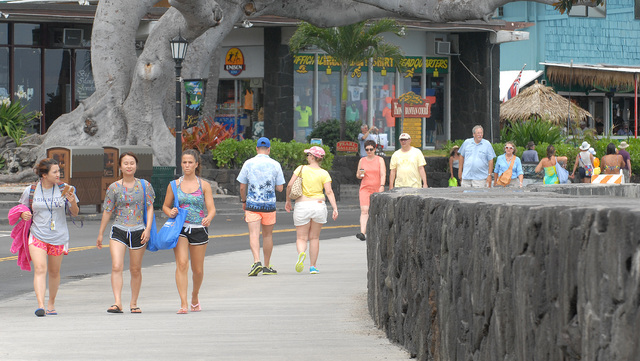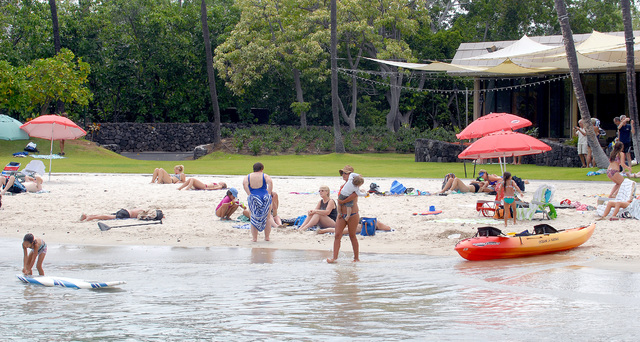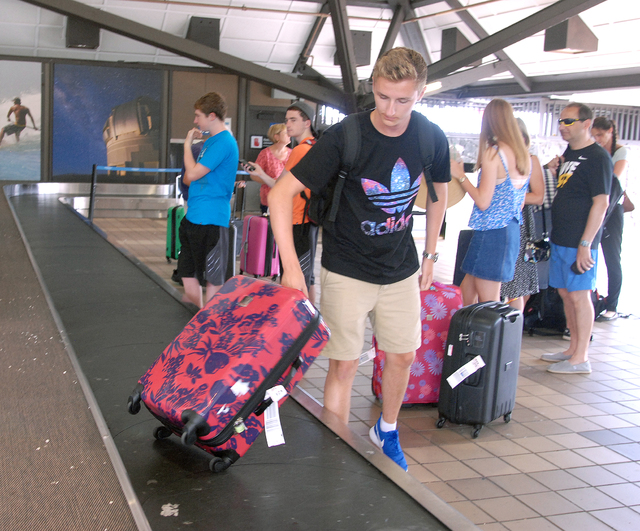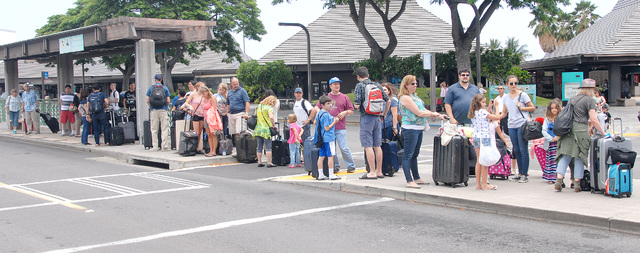More and more people are coming to the state, reports the Hawaii Tourism Authority, but visitor expenditures are remaining flat. ADVERTISING More and more people are coming to the state, reports the Hawaii Tourism Authority, but visitor expenditures are remaining
More and more people are coming to the state, reports the Hawaii Tourism Authority, but visitor expenditures are remaining flat.
“While the growth in August was not as strong as in previous months, Hawaii’s visitor industry continues to exceed 2014 records in spending and arrivals. Spending reached $10.3 billion for the first eight months of 2015 and contributed $1.1 billion in state tax revenue,” said George D. Szigeti, president and CEO of the HTA, in a press release.
For the Big Island Visitor’s Bureau, this change represents holding on to the strong growth of last year, said executive director Ross Birch.
Last year, the island finished out with a 16.4 percent increase in total expenditures, he said, a situation Oahu is beginning to experience.
The authority counted 755,863 visitors for the month of August, a new record. That 2.9 percent increase over the previous year was boosted by growth in most major markets, including an 8.8 percent increase in Canadian visitors and a 2.4 percent increase in U.S. East Coast visitors. There was an overall increase in Chinese visitors, while the number of Japanese visitors remained largely flat. Korea and other Asian countries saw a drop in visitors to the islands.
“In addition to pacing at record-breaking levels, air seats to the Hawaiian Islands are at an all-time high, boosting arrivals from most of our markets. And while we are pleased with this continued growth for the lead economic driver for the state, we are monitoring various conditions that could impact our industry. Fuel prices have been dropping, the international stock market continues to be in flux, and economic conditions in both Europe and Asia have been unstable. All of these factors could have a potential impact on spending and arrivals to the state,” Sziegeti said.
The Big Island saw an increase of 2.2 percent, to 130,103 visitors. There was a 1.2 percent increase in daily spending, for a total of $180 per person. In all, expenditures reached $161.0 million.
Birch said the flat growth also reflects an artifact of the way data is measured. The island has drawn in a large number of group events, he said, and the people in those groups tend to under-report their costs, as they do not pay out-of-pocket. However, they are still filling up rooms and using transportation, he said.
The increase in direct flights to Kona included a 13.9 percent increase in seats and helped boost the number of U.S. West Coast arrivals every month so far in 2015. There was also an increase of 7.1 percent in people who stayed exclusively in Kona. However, the number of Japanese arrivals to the island have shown declines since the beginning of the year.
Overall, international visitors exclusively to the Big Island dropped 21.2 percent, with 5,799 people reporting that option.
“Maintaining the level of growth we have been experiencing over the last few years will be a challenge. However, we will continue to work with our global partners to ensure Hawaii remains top-of-mind as both a leisure and business destination through creative and innovative strategies,” Szigeti said.
The single most popular reason to come to the islands this year remained vacations, with 617,292 coming so far, a 3.6 percent increase. But the islands are not as much a lover’s place as last year, as honeymoons, weddings and combined trips all dropped.
The state continues to draw corporate meetings, with 4,414 people coming to the islands for that purpose so far. That’s an increase of 12.5 percent over August last year.
Although the in-state cruise ships continued their journeys, there were no out-of-state cruise ships docking in August 2014 or 2015.






